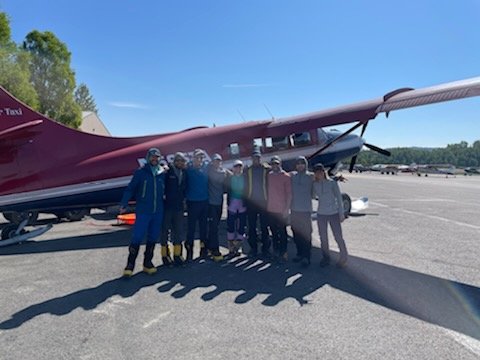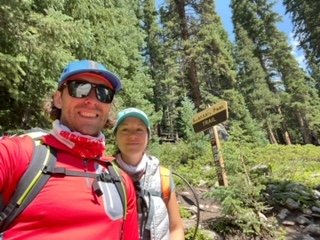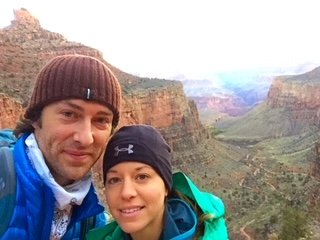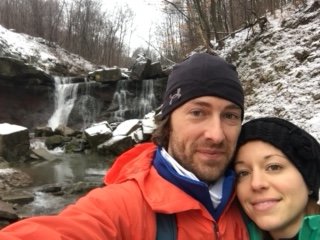June 16
Team is going for the summit. Couldn’t be more proud and happier for them and proud that I got to be part of this team. Here is an call in from Andy, listen here!
June 15
Thank you everyone for the kind notes and messages. I'm still playing catch up, but safely back in civilization.
"Take your losses like you take your wins.” My dad told me that after I broke my stick over the crossbar in an overtime loss in a game we deserved to win in every way. Still after all these years, the losses you don’t deserve are hard to swallow.
The weather window right now on Denali is like nothing anyone has seen. It’s perfect, if there was ever a year to climb Denali and have perfect summit weather, it’s now. A chance in a lifetime that has gone to waste, after all the planning, 6months of training and sacrificing from all those around me. It wasn’t that I wasn't strong enough, or that the Denali storms prevented me from summiting. I got COVID.
It’s hard not to be upset and devastated at first, but now as I start to recover it's turned more to frustration and anger. They say to expect the unexpected on Denali, and I felt I was prepared for that. Weather, injury, sickness, losing a tent, you name it. All of those can happen and you might still have a chance. If you get Covid, the policy is you come down. Selflessly it’s the right move, remaining with your team endangers others of infection.
After all this time never getting Covid, it was a shock to test positive as shitty as I felt. I had a 36 hr trip into anchorage through 5 airports, due to my flight being cancelled (Thank you American Airlines). I must have been exposed somehow.
My experience with Covid at altitude was not good. I had a fever and was completely exhausted like never before. After a full rest day, in an attempt to recover, my condition worsened. I began to produce blood from my sinuses and cough.
Altitude concerns of worsening conditions made the decision to descend more immediate. After taking 20 mins to pack, I started my descent down, which took a little over 18 hours. As frustrating as this was, it was the right decision. I was a distraction on our team (although no one made me feel this way), on a climb that had so much else that could go wrong. To be in isolation in my own tent required someone to sleep in a dugout snow cave and others in the cook tent. The rest of the team thankfully tested negative, they moved to high camp shortly after I left and are making the final hours of their summit push as we speak!! In a perfect weather window that they very well deserve.
Having Covid is unique because people can’t really be close to you and help you. I was able to rope up with one of the other teams coming down off the summit. My descent was still eventful. After a break at one of the lower camps for food, water and quick rest, we decided to continue through the lower glacier since temperatures had remained cold that afternoon. All my travel before this has been throughout the night (we started most of the climbs between 12-2am.).
My rope partner fell into a crevasse shortly after we left camp one that late afternoon. Never realizing the importance of proper mountain safety until you are in it, what could have been fatal, was simply a 10-15min delay. The other rope team immediately came over, helped support my line and within a few minutes we had him pulled out of the crevasse and we were back on our way. With several other deaths on the mountain over this past month, it's a quick reminder to never take shortcuts on safety in the mountains, the risks are real.
I feel fortunate my team did not test positive and they will get the summit they very much earned. I am fortunate to have much in life to look forward to and to return home to - friends, work, family, my wife and dog, my health and returning with all of my digits. So many reasons to look forward to coming home, but if I'm being honest, this one still really hurts.
Thank you everyone for the support and kind words. Also thank you all so much for the donations, the goal that was surpassed in less time than it took me to get from Chicago to Anchorage (less 36hours).
Cheers,
Eric
June 11
I am sorry to report that Eric has tested positive for COVID while on the side of a mountain. He is now isolating in a tent on Mount Denali. He had a headache and was feeling exhausted but is doing much better with some rest and medication. Know that he is safe and doing well otherwise.
Next steps are to plan to get out of the altitude - we anticipate a few days, and eventually off the mountain. We are very sad that he will have to stop his summit attempt. I saw how hard he worked for this in the last 6 months, and he started out this climb extremely strong considering. Also how safe he has been the last few years and never caught COVID until the worst possible time. The most important thing to us right now is that he is safe and doing well.
I’m sure this post is creating many q’s - but don’t worry, the blog won’t stop here, part of climbing is to be prepared for unexpected events…… stay tuned……… when Eric is back and rested he will take over with an update. Check back in a few days.
June 10
I heard from Eric quickly. All is good - although he’s still not feeling 100%. WiIl have an update later - most likely tomorrow since they are 3 hours behind in Alaska.
June 8
Crickets……………….
June 7
Just heard from Eric - They are in a snow storm! They are doing well but need to conserve batteries etc. He will report back after the storm passes.
Camp 2
Update from yesterday just came in from Mountain Trip. Read below.
Update from Mountain Trip: Lead guide Ty called in last night from Camp 2 at 11,200′ (3413m). Yesterday the team packed up personal gear, tents, cookware, etc. and started their day by climbing 1,200′ (365m) up Ski Hill. After topping out on Ski Hill the team experienced rolling terrain as they approached their cache site at 10,200′ (3108m) from the day before. Here, the route jogs to climbers right and continues to climb up into a small basin where Camp 2 resides. It’s only about 2.75 miles but climbs 3,200′ (975m) in that short span. Camp 2 lies at the base of some astounding seracs (large usually column like blocks of ice that form on steep parts of a glacier) and steep granite faces. The team got to bed early last night so they could descend back to their cache site today in the cool of the morning. After returning to camp, the team finished their active rest day with some snacks, some naps, and probably some skills practice as well as they prepare to climb some steeper terrain leaving Camp 2. Skills practice for this part of the expedition would include crampon and ice ax familiarization.
June 6
Camp 2
The June 2nd team made it to Camp 2 today!
Heard from Eric today. Sending him energy - he’s feeling tired and a bit run down from the long travel.
Recording from Ty: https://api.twilio.com/2010-04-01/Accounts/ACdfb9ce9f7a364ec0953eef792a6e9a46/Recordings/RE82db1495db122de67df20fe1bdc7de6b.mp3
June 5
Leaving Camp 1
Woke up to a bit of snow today. Carried their gear from Camp 1 up to 11,000’ and then back down to Camp 1. The plan is a full move to Camp 2 tomorrow.
A MESSAGE FROM ERIC (to listen, copy and paste link in your browser): https://api.twilio.com/2010-04-01/Accounts/ACdfb9ce9f7a364ec0953eef792a6e9a46/Recordings/REe0beb3964b7b42af7b257d92f509b67c.mp3
Leaving Camp 1
Photo from a 2021 team.
Update from Mountain Trip: The team was able to put in their first cache at 10,200′ (3108m). Caching is a great system that is indicative of an expedition style of climbing. Teams will pick supplies; gear, food, fuel, etc. that are not needed for a few days and climb to a point between the camp they currently reside at and the one they will move to next. Here they dig a meter deep hole, pile in their supplies, and bury it with a mound of snow. They will mark it with a GPS point and a 6 foot bamboo wand which bears their team tag. Today the team will move up to Camp 2, and tomorrow they will return to 10,200′ (3108m) to retrieve their cache. This method of “climb high, sleep low” gives teams a better chance to acclimate and also lightens their 110lb loads quite a bit, making the climb a bit easier.
Eric checked in twice today on his gps saying ‘checking in, everything is ok.’ You can see where he is on a map via the link at the top of this page.
Nims is on Denali?
The legend from 14 peaks is apparently on Denali climbing as well. The movie is amazing if you haven’t seen it. I wonder if Eric will meet him?!
June 4
The climb.
It starts. The first trek that could take up to 6hrs, they crushed it in 5hrs! Way to go team! Starting off strong.
Report From Mountain trip: One of our guides, Ackerman, updates us from Camp 1 last night! The team woke up bright and early at 2am in the twilight of the morning and left camp a few hours later as the sun began its early northern sunrise. Sounds like it took the team less than 5 hours to travel the 5.5 miles and 1,000′ of elevation gain to Camp 1. Leaving camp is no small task. The team woke up and got water melting, coffee brewing, and breakfast cooking. In the meantime, those not in the cook tent were packing up their gear and the tents. All of these items are packed strategically in packsacks and sleds. Everyone ties into their rope teams and then the team is finally ready to take off. Leaving Camp 1 the team first descended 600′ down Heartbreak Hill. Basecamp is located on the Southeast Fork of the Kahiltna Glacier. Like a tributary flowing to a river, the southeast fork flows downhill to meet the main body of the Kahiltna Glacier. A 40 mile long frozen river.
At this time of year, teams will travel at night mainly because the glacier will be frozen and solid. Which means snow bridges spanning crevasses will be more stable. But it also more comfortable to travel at this time of day. Even though the team is traveling on snow, these elevations see temps reaching the freezing point, which feel wicked hot on a clear calm day with a bright sun. Now the team can sleep during the daylight hours before getting ready for their next move.
Check out the recording from Ackerman: https://api.twilio.com/2010-04-01/Accounts/ACdfb9ce9f7a364ec0953eef792a6e9a46/Recordings/REf4037c8ee96e1f6a66f97a3df372f66d.mp3
June 3
6:30pm - got to base camp safely! Did some practicing of skills and heading to Camp 1 tomorrow - departing at 4am. Off to a great start!
Flying into base camp.
Here’s what it would look like - Eric can no longer send pics so I will be using pics from previous trips so you can get the idea.
Listen to the recording from the lead guide Ty here: https://api.twilio.com/2010-04-01/Accounts/ACdfb9ce9f7a364ec0953eef792a6e9a46/Recordings/REb71f381d456fa3f36f21be0bce1c51a9.mp3
The team!
Packed the plane and ready to fly out to the Glacier. Boots on ready to go!!! (Eric on the left!)
Talkeetna
Arrived in Talkeetna.
Go Time!
The team is packed up and waiting for their bus. Trying to get a head start - ahead of the snow. Expecting 6-12”/day. May be a slow start - but the team is prepared for all scenarios! Go June 2 team! Get it!
June 2
Well Eric finally made it to Anchorage. We are soooooo relieved. Check out the journey below.
Amazing news - Eric hit his fundraising goal faster than he was able to get to Anchorage. Thank you all so much for your support of Eric on this journey of a lifetime and your support towards something very important to us - Brain research. We are incredibly thankful for your contribution. If you want to donate you can get to his donation page from the Project7 tab above.
Eric is a bit late to the party so he is getting organized and caught up with the team. They start their journey tomorrow morning at 6am, so he’s also going to get some rest. Goodnight!! Bonne nuit!!
Gear is here!!!
Thank you mountain gods! The relief and joy on Eric’s face:) …..similar to the relief we felt back home went he sent this photo update.
Anchorage
MADE IT!!! Finally. Final stop - Unfortunately bags didn’t make it on this flight - we are told to wait for the next inbound from Seattle for bags in an hour and they might be on there…… kinda need that gear to live on a glacier…….. try not to panic.
Juneau
3rd stop - In Alaska….. Interesting to learn about the Whitehorse/Juneau old timer’s hockey league….. Basically Canada up there.
Seattle
Second stop - 10mins to catch the next flight.
Vegas Baby
First stop - great people watching but not an ideal place to spend the night.
June 1: Chicago to Alaska
The next best option - 4 flights in 24hrs………………..
Oh boy - flight cancelled WTF?!
Packed and Heading to the airport
Meet the Team
WELCOME! Here is where you can follow Eric’s and the team’s journey up the frozen arctic slopes of The Great One (Denali). This team will join many others as they climb Denali via the classic West Buttress Route which will climb over 13,000 feet from Basecamp on the South East Fork of the Kahiltna Glacier to the sky scraping 20,310 foot (6,190 meter) summit!
Majestic Denali rises a full 18,000 feet (5,486 meters) above its surrounding landscape. That’s 5,000 feet MORE than the elevation relief of Mt Everest! Due to its location so close to the Arctic Circle, conditions can often be very winter like well into the summer months. Around the Summer Solstice, the Alaska Range experiences over 20 hours of daylight, and even in the depths of night the sun never truly sets, making headlamps unnecessary and eye masks essential. The West Buttress will lead the team through heavily glaciated terrain from Basecamp on the Kahiltna Glacier at 7,200′, to Camp One at 7,800′, Camp Two at 11,200′, Camp Three at 14,200′, High Camp at 17,200′, to–conditions permitting–the 20,310′ summit.
Here’s the crew!
Gavin Syndercombe
Andy Baatz
Brian Alexander
Daniel Gallagher
Caroline Buckland
Eric Pilon-Bignell
The Mountain Trip team has been guiding up Denali for many years, The expedition will be lead by head guide Ty Guarino, his 6th time on the mountain and assisted by leads Carly Casternovia and Michael Ackerman.
Throughout the team’s expedition, please keep in mind the adage of “no news is good news!” in terms of the updates from the field. There are some days when certain circumstances, like poor satellite phone reception (this happens frequently at Camp 2 at 11,200′, as it is situated in a high-alpine basin with massive peaks on all sides), fatigue from a particularly long day, no change in their situation due to weather, etc., will prevent teams from calling in an update. Friends and family are encouraged to leave comments for Eric on this expedition, but keep in mind that he will not be able to see posts or comments until he returns to Talkeetna after the end of their expedition, once they leave the glacier.
Denali Factoid: Ever wonder what happens to all the trash and… other stuff? Well it all has to come out with you, I mean ALL of it. Since 2001 the Park Service has been using Clean Mountain Cans to assist climbers in bringing their excrements off the mountain. An essential action to preserve these frozen slopes which tend to preserve things in their place for decades. Read about it on the NPS blog here.
Don’t forget you can follow along on Eric’s GPS here https://share.garmin.com/EricPB
Itinerary (in theory…)
The Route
In theory, the route and the camps taken to summit Denali!
Denali is a big, serious mountain with big mountain weather, geography and acclimatization issues. You carry 130-150 lbs between your pack and your sled, in June it still has artic weather that drops below -40 degrees, heavy snow fall, and winds that can exceed +100 mph. There is not the traditional support systems of many large mountain expeditions, there is not a large established base camp, there are no yaks, no porters or Sherpas. There is only you, your team, your pack and your sled. Being in one of coldest places on the planet, that can only be accessed by a float plane with snow skis if the weather is good, experienced planning is a must. The following itinerary represents a basic outline of what could happen on a given day during the course of a Denali expedition. Many factors can—and likely will—contribute to cause the following schedule to change. Mountain Trip has been leading teams up this mountain for many many years, this agenda below is never exactly followed but one of the best blue prints for success. Mountain Trip, based in Alaska, is one of only a few authorized concessionaires of Denali National Park and Preserve. After much research and speaking with previous climbers of Denali, they are also one of the best.
June 1: CHICAGO. Flight from Chicago to Anchorage, check in hotel around midnight. Get up early tomorrow to meet with the team, expedition orientation and equipment check.
June 2: MEET IN ANCHORAGE. Our Team Meeting is scheduled at 10 a.m. for an expedition orientation and equipment check.
June 3: TRAVEL TO TALKEETNA AND FLY TO THE GLACIER. The drive takes a bit more than two hours, and we’ll stop for coffee and snacks along the way. Once in Talkeetna, we’ll need to unload, organize, and weigh all of our equipment and supplies in preparation for our flight to the glacier. We will also finish the registration process with the National Park Service (NPS) and attend a pre-climb orientation provided by one of the NPS climbing rangers. After finalizing all the NPS admin steps, we’ll fly to the glacier, weather permitting. Once on the Southeast Fork of the Kahiltna Glacier, we’ll be busy establishing our camp for the night.
June 4: SINGLE CARRY TO 7,800′ CAMP. Departing base camp, we’ll drop down the infamous Heartbreak Hill and onto the broad Kahiltna Glacier. Our goal will be to move camp to about 7,800′, near the junction with the NE Fork of the Kahiltna Glacier. This is a moderately tough day of about 5 miles and is a good warm up for the upcoming days. Throughout the expedition we will typically follow the “climb high, sleep low” technique for better acclimatization; however, the altitude difference between Base Camp and 7,800′ Camp is minimal enough to permit us to generally “single-carry” this stretch. Being a June expedition, we may climb early in the morning to avoid excessive heat and soft snow conditions on the lower glacier.
*Quick Stats: 8 km / 5 miles, with 365 m / 1,200’ of elevation gain. Climbing Time: ~ 4.5-6 hours.
June 5: HAUL LOADS UP TO KAHILTNA PASS. We’ll head out of 7,800′ Camp and carry loads up the 1,800′ Ski Hill. Several options exist for campsites between 9,000′ and 11,000′, depending upon weather, snow conditions and team strength. This is a moderately difficult carry of 7-9 miles round-trip, with 2,000′-3,000′ of elevation gain and a return to 7,800′ Camp for the night.
*Quick Stats: 12.87 km / 8 miles round trip, with 670 m / 2,200’ of elevation gain and loss. Climbing Time: ~ 6-8 hours.
June 6: MOVE EVERYTHING TO 11,000′ CAMP. Our second camp is often in the 11,000’ basin at the base of Motorcycle Hill. This is an incredibly beautiful location that basks in alpenglow when the sun travels around the north side of the mountain.
*Quick Stats: 7.64 km / 4.75 miles one way, with 1,036 m / 3,400’ of elevation gain. Climbing Time: ~ 5.5-7 hours.
June 7: BACK-CARRY DAY. This is an “active rest day” during which we drop back down and pick up the cache we left near Kahiltna Pass. It also helps give us another day to acclimatize before moving higher.
*Quick Stats: 2.4 km / 1.5 miles round trip, with 365 m / 1,200’ of elevation loss and gain. Climbing Time: 1.5 hours round-trip.
June 8: HAUL LOADS AROUND WINDY CORNER (13,300′). Steep snow climbing up the 1,000′ high Motorcycle Hill rewards climbers with spectacular views. The total distance for the day is about four miles round trip with a little over 2,000′ of elevation gain. Fun climbing with crampons and an ice axe gets us around Windy Corner where the upper mountain comes into view.
*Quick Stats: 6.43 km / 4 miles, with 700 m / 2,300’ of elevation gain. Climbing Time: ~ 6-7 hours round-trip.
June 9: MOVE CAMP TO 14,200′. This is usually a long, hard day. Our next camp is generally located at the well-equipped 14,200’ Camp in the expansive Genet Basin. Loads are getting lighter and the air is getting thinner. Upon arrival, everyone will need to pitch in to build our camp as we need to fortify our tents due to severe winds.
*Quick Stats: 4 km / 2.5 miles, with 914 m / 3,200’ of elevation gain. Climbing Time: ~ 5-7 hours.
June 10: BACK-CARRY DAY. This is another “active rest day,” during which the team will descend from Genet Basin to the Windy Corner cache and bring everything up to 14,200′.
*Quick Stats: 1.6 km / 1 mile round-trip, with 213 m / 700’ of elevation loss and gain. Climbing Time: ~ 1.5 hours round-trip.
June 11: CLIMB UP THE HEADWALL TO THE RIDGE. Our goal is to cache supplies up on the ridge above us and return to 14,200 feet. Climbing up the “Headwall” (the section of route with fixed lines running from 15,500′ to 16,100′) with a heavy pack makes this one of the more strenuous days of the trip because of the steep terrain, heavy pack and thinning air.
*Quick Stats: 3.8 km / 2.4 miles round-trip, with 670 m / 2,200’ of elevation gain and loss. Climbing Time: ~ 5-7 hours.
June 12: REST DAY. It is often prudent to take a rest/acclimatization day prior to moving up to High Camp.
June 13: MOVE TO HIGH CAMP. Weather and team strength will again determine this decision. While there is a camp site at 16,100′, it is very exposed, so we usually push for the 17,200′ site, which is more secure and the better choice for camp. This is a really tough day, as our loads are big and some of the the terrain we will negotiate is steep. Rewards for our work are in the awesome climbing along the ridge. Weaving in and out of the rocks and occasionally walking a knife-edge stretch, combined with big exposure, should make this day one of the most memorable of the route assuming all goes well.
*Quick Stats: 3.21 km / 2 miles, with 914 m / 3,000’ of elevation gain. Climbing Time: ~ 6-8 hours.
June 14: REST DAY. Moving to 17,200’ and getting High Camp established can be a huge day, so we usually take a rest day before attempting the summit. Circumstances could mean that we do not take this rest day, but if possible, we will prefer to take it.
June 15: SUMMIT DAY. If the weather is favorable, we’ll push for the summit. It is important to be patient on a big peak like Denali and we will only try for the summit when the weather is good. The round-trip climb will take 12-16 hours or more. We will plan to depart camp early (7-10 a.m.), climb up to Denali Pass (18,000’) and follow the route past Arch Deacon’s Tower and the Football Field to the slopes leading to the Summit Ridge. Stay focused up the ridge, tag the summit, and bust out a few selfies as proof.
*Quick Stats: 8 km / 5 miles round-trip, with 914 m / 3,000’ of elevation gain and loss. Climbing Time: ~12+ hours
Summit Day is Serious - The weather needs to be good and everyone attempting the summit must be in good health and strength. This is the most grueling day both mentally and physically, of the expedition (many climbers say of their lives!). Our team lead, Ty, will make the ultimate decision as to when the team will make a summit bid.
June 16-17: DESCENT. The descent from High Camp takes one to two days, depending on our strength. The descent can beat you up more than the ascent, as we will be shouldering our heaviest loads of the trip climbing down from High Camp to Camp 2. Weather dictates when we can fly out to Talkeetna for well deserved food and showers.
June 18-24 CONTINGENCY DAYS. We build seven “contingency days” into our schedule. Denali has a well-deserved reputation for arctic weather, and it is common to take weather days at some point on the mountain.
June 25: RETURN TO ANCHORAGE AND FLY HOME. If you can find a flight…
May 28th
Packing & prep - this is about 1/2 of the load. Denali does not have porters or yacks, therefore you must carry everything (about 130-150lbs) between your pack and sled.
Angela & Bella
Newest bloggers to the universe, the lucky ones selected to update Eric and his Team’s progress up Denali.
Adventures and Training
Eric dragging a tire and carrying a weighted pack around downtown Chicago in the middle of the winter
Weighted pack carry on incline trainer, while carb loading #loveandpizza














































































